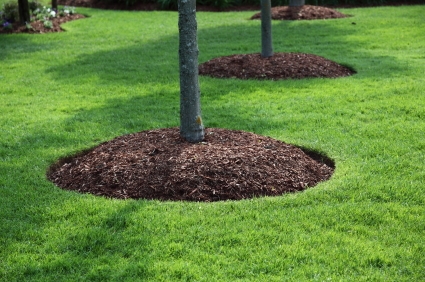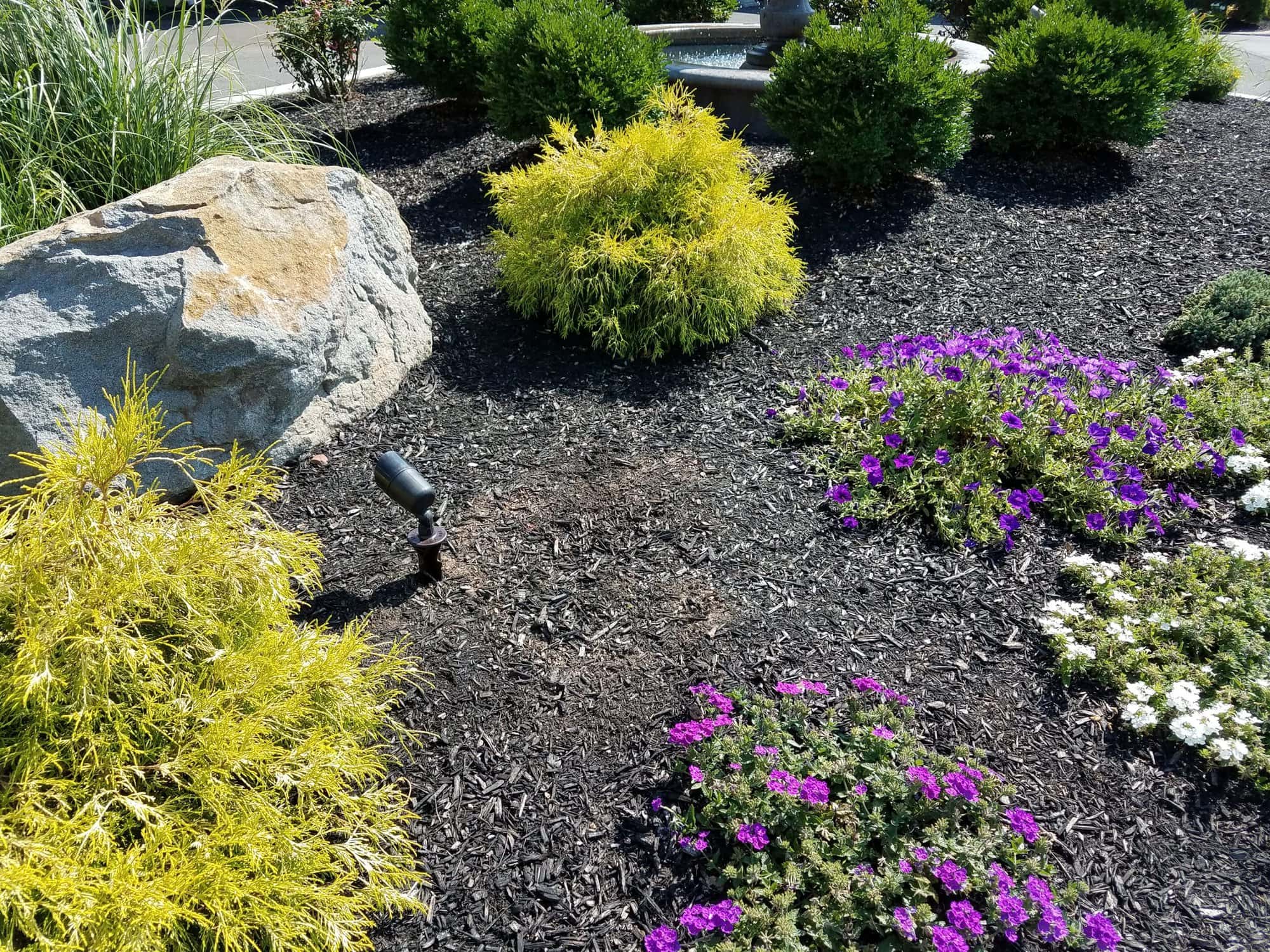There are a number of advantages to adding mulch to your landscape. When mulch hardwood bark mulch is applied and cared for correctly, it prevents erosion, protects plants from extreme temperatures, improves soil structure by adding organic matter, conserves soil moisture, suppresses weeds, and adds beauty to landscape plantings!
We all love what mulch does to our landscape, but don’t misuse it.
Proper mulching means applying the proper amount and spreading it evenly across the bed. However, some folks simply overdo it. Just because mulch looks good and has so many benefits, more isn’t necessarily better. Having too thick of a layer of mulch can have harmful effects. Let’s look at the downside of over mulching.
Why Over Mulching Is Bad
Generally speaking, a 2 to 4 inch layer is what is necessary to reduce weed growth and insulate the soil. Plants need breathing room. Roots need oxygen to thrive, and your trees and flowers can be smothered under a deep pile of mulch. Also, excess mulch retains too much moisture which causes root rot and invites mildew and insects.
Excessive Mulch around Trees
The International Society of Arboriculture defines it as “mulch volcanoes”. You’ve all noticed these gargantuan piles of mulch formed high around the base and trunk of trees. This has become a bad practice and can actually harm a tree.
Mulch volcanoes not only suffocate roots (leading to the tree’s slow decline), but also encourage pests, such as voles to burrow in. Other negative side effects might be bark rot and insect and disease problems.

Best Practices for Mulching Around a Tree.
Mulch should be higher at the outside edges and if you have clay soil that doesn’t drain well, use only 2 inches. Pull the mulch away from the tree trunk about 5 inches and expose where it visibly flares out at the base (where the trunk meets the soil). For new trees, spread the mulch out as wide as the ‘drip line’ of the canopy.
Remove Excess Mulch
If you feel your yard has an overload of mulch, you can refresh the old mulch by raking up any matted layers or if it has decomposed and washed away, it’s OK to replenish your mulch. If you feel that your mulch has decomposed and washed away,
A word of caution: you might want to call a certified arborist before proceeding with any trees that need serious root flare excavations. When dealing with root suffocation, air cannot penetrate through to the roots and roots can decline causing the tree to die. Trees are often planted too deep and may have the root flare buried under the soil in addition to excess mulch. Whitehouse Landscaping has the experience and specialized equipment (tree space air compressor) to uncover the root flare.
Avoid problems of over mulching by laying down only about two inches of mulch at a time. Adding new mulch over thick old mulch every year is the same as applying too deep a layer all at once. Yes, aesthetically, mulch makes your landscape pop and adds even greater value to the hidden roots it covers. But be mindful of over mulching and the harm you could be doing to your plants.

